Author: Dorian Kandi & Matías Andrade Source: Coin Metrics Translation: Shan Ouba, Golden Finance
Key Points:
Derivatives allow indirect exposure to cryptocurrencies
Derivatives allow investors to hedge downside risk
Derivatives enable diversified trading strategies that are not possible with spot trading alone
Derivatives allow investors to exploit market inefficiencies through arbitrage.
Introduction to Derivatives
Derivatives are financial instruments that have become a cornerstone of the financial ecosystem, enabling participants to effectively manage risk and allowing markets to operate more efficiently. The global derivatives market is massive, dwarfing even the global stock and bond markets. Similarly, derivatives in the cryptocurrency market have evolved to provide traders and investors with sophisticated tools to enable a variety of hedging, speculation, and risk management strategies for this growing asset class. The main types of cryptocurrency derivatives are futures, perpetual futures, and options, each of which caters to different needs.
This article delves into the landscape of derivatives in both traditional finance and crypto asset markets, examining their types, applications, and underlying data.
What are Derivatives?
A derivative is a financial instrument whose value depends on the value of one or more underlying variables. Traditionally, these underlying assets are traded assets such as stocks, bonds, currencies, and commodities such as gold, oil, and wheat. In the case of crypto derivatives, the value of these financial instruments is derived from the price of a cryptocurrency, such as BTC or ETH.
Types of Derivatives
A futures contract is an agreement to buy or sell an asset at a predetermined price at a specific time in the future. These contracts are standardized and traded on exchanges. Futures allow traders to speculate on the future price of a cryptocurrency or hedge against price fluctuations. Traditional futures have an expiration date, when the contract is settled.
Perpetual futures are similar to standard futures, but do not have an expiration date. This means that traders can hold their positions indefinitely, subject to maintenance margin requirements. Perpetual futures are typically traded on margin, allow for leverage, and are subject to funding rates, which are periodic payments exchanged between long and short positions. These rates bring the contract price close to the price of the underlying asset.
Options give the holder the right, but not the obligation, to buy (call option) or sell (put option) an asset at a specific price before or at the expiration of the contract. Options can be used for hedging or speculation. For example, call options allow traders to benefit from price increases while limiting downside risk because they are not obligated to buy the asset if it falls below the strike price.
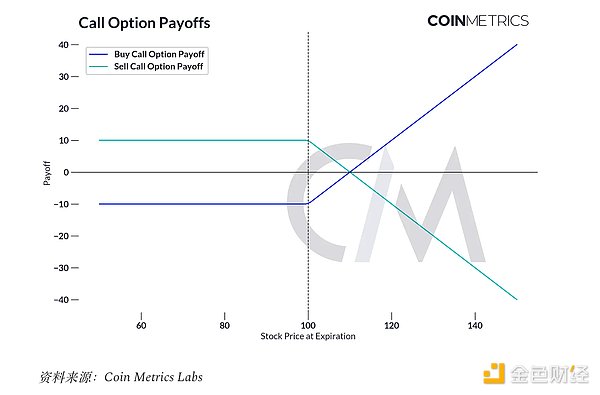
The first figure illustrates the payoffs of buying and selling call options. A call option gives the holder the right to buy an asset at a specified price (the strike price) before a certain date.
Buy a call option (blue line): If the stock price at expiration is below the strike price, the option expires worthless, resulting in a loss limited to the premium paid. As the stock price rises above the strike price, the gain increases linearly.
Sell a call option (green line): If the stock price remains below the strike price, the seller profits through the premium received. However, if the stock price rises above the strike price, the seller could face unlimited losses.
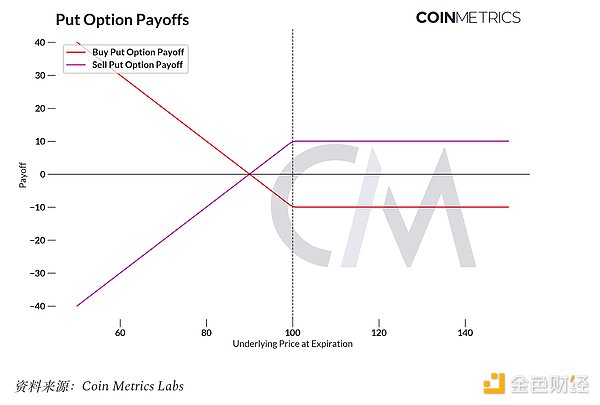
The second chart shows the returns of buying and selling put options. Put options give the holder the right to sell an asset at a specific price before a specific date.
Buy a put option (red line): If the stock price is above the strike price at expiration, the option expires worthless and the loss is limited to the premium paid. If the stock price falls below the strike price, the return increases linearly.
Selling a put option (purple line): If the stock price stays above the strike price, the seller profits through the premium received. Conversely, if the stock price falls below the strike price, the seller's losses increase.
Traders often combine options, futures, and spot instruments to adjust their exposure and effectively manage risk. For example, a miner may use futures to lock in a sales price and purchase options to hedge against adverse price movements.
Forward-looking indicators
By design, derivatives have forward-looking expectations about future events.The ratio of a futures price to its underlying spot price is called the implied forward rate (also called the "implied yield" or "basis"). This implied yield is useful for comparing returns and expectations of different assets.When the implied yield is positive, it indicates that investors expect the value of the underlying asset to increase over the contract period. Conversely, negative yields suggest that investors expect an asset to fall in value. The chart below illustrates this phenomenon. Shown here is the annualized futures basis for a one-month period. Notable peaks and troughs reveal key insights about market expectations, with peaks in implied yields typically occurring before anticipated events. A notable uptick from December 2023 to January 2024 coincided with expectations and launches of a Bitcoin spot ETF. Yields subsequently normalized as the market digested this development. Another peak occurred in April, likely driven by expectations for Bitcoin’s fourth halving event, a cyclical event that typically draws more attention to the asset. Conversely, a notable and abrupt downturn occurred in late 2022 as events surrounding the rapid collapse of FTX unfolded, with broad implications for the cryptoasset industry.
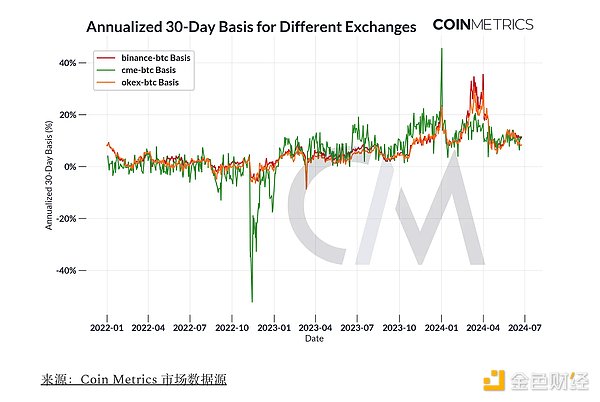
Use Cases of Derivatives in TradFi
More than 20 years ago, Southwest Airlines launched its famous jet fuel hedging program in 1994. During the global financial crisis, the airline effectively hedged 70% of its fuel needs at $51 per barrel; while crude oil market prices soared to $130.
Farmers who want to ensure prices before harvest can do so by purchasing agricultural derivatives. For example, a corn producer may decide to sell a corn futures contract in May and take delivery in December. Due to the volatility of the corn market price, any gain/loss on the corn market price is offset by the gain/loss on the futures contract. This allows the farmer to manage the risk of falling corn prices throughout the season.
Use Cases for Crypto Derivatives
One of the key use cases for cryptocurrency derivatives is hedging, especially for miners. For example, Bitcoin miners invest a lot of money in hardware and operating costs, which makes them highly sensitive to the price fluctuations of the cryptocurrency. They are essentially long BTC and short USD because they receive mining rewards in BTC and all expenses are paid in USD (assuming they live in the United States). By using futures or options, miners can lock in the selling price of their mined cryptocurrency, ensuring a predictable revenue stream and protecting against potential price drops.
In addition to miners, derivatives are also useful for investors and traders in the crypto asset market. Their popularity can be observed in the chart below, which illustrates the share of Bitcoin trading volume in the futures market versus the spot market over time.
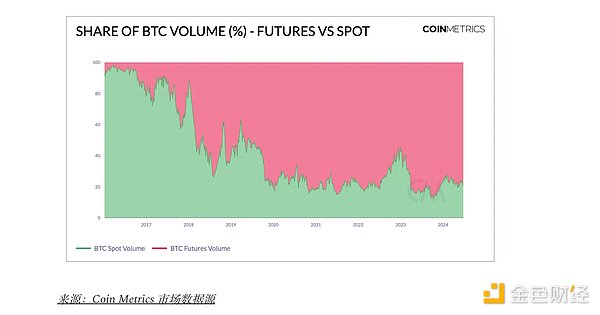
While spot trading initially dominated, futures trading has captured the majority of market activity — currently 78%. This is mainly due to factors such as the strong infrastructure of centralized exchanges, the tools provided by decentralized exchanges, the clearer regulation of futures products, and the strong appeal of leverage. The ratio between the spot and futures markets will continue to change as the market adapts to new investment tools and launches a spot Bitcoin ETF.
The rise in open interest levels for Bitcoin futures across exchanges further demonstrates the role of derivatives, especially during the launch of Bitcoin spot ETFs. Futures open interest refers to the value of futures contracts that have not yet been settled or closed, serving as a measure of market activity. BTC open interest reaching $30B may be due to investors potentially buying spot Bitcoin ETFs and hedging their risk through futures contracts. This highlights an important use case for derivatives as they allow investors to manage risk and position themselves strategically in the market.
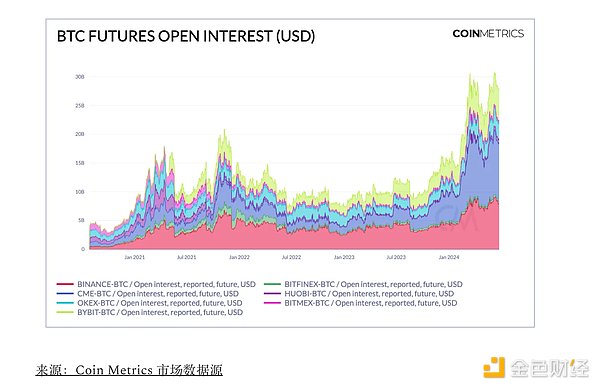
The settlement mechanism of derivatives is critical. In traditional markets, derivatives can be either cash-settled or physically-settled. Cash-settled derivatives are settled in cash based on the difference between the contract price and the market price at the time of settlement. Physically-settled derivatives involve the actual delivery of the asset. Most cryptocurrency derivatives, especially those on venues such as CME, are cash-settled. This means that at settlement, participants exchange the difference in value rather than the actual cryptocurrency.
Conclusion
Derivatives in the cryptocurrency markets have become an important tool for managing risk and enhancing trading strategies, reflecting their importance in traditional finance. They enable participants to hedge against price movements, speculate on future prices, and gain leveraged exposure to cryptocurrencies, while typically settling in cash to facilitate an easier trading and settlement process. The development of crypto derivatives has greatly contributed to the maturation of the digital asset ecosystem, providing institutional and retail investors with familiar tools to navigate this new asset class.
Network Data Insights
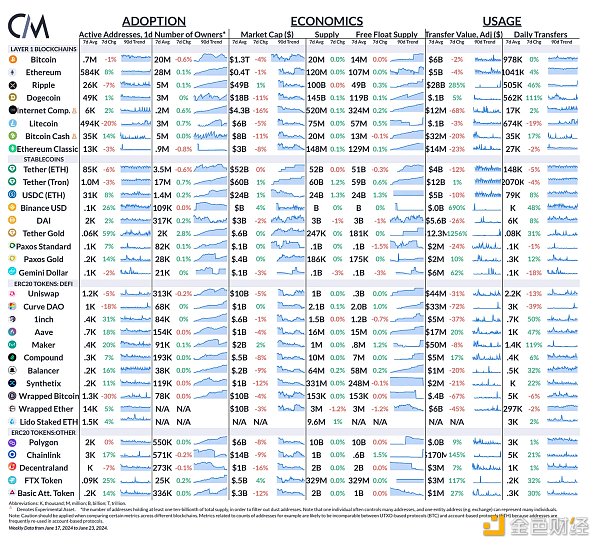
 JinseFinance
JinseFinance
 JinseFinance
JinseFinance JinseFinance
JinseFinance JinseFinance
JinseFinance JinseFinance
JinseFinance Sanya
Sanya decrypt
decrypt Beincrypto
Beincrypto Coindesk
Coindesk Nulltx
Nulltx Bitcoinist
Bitcoinist